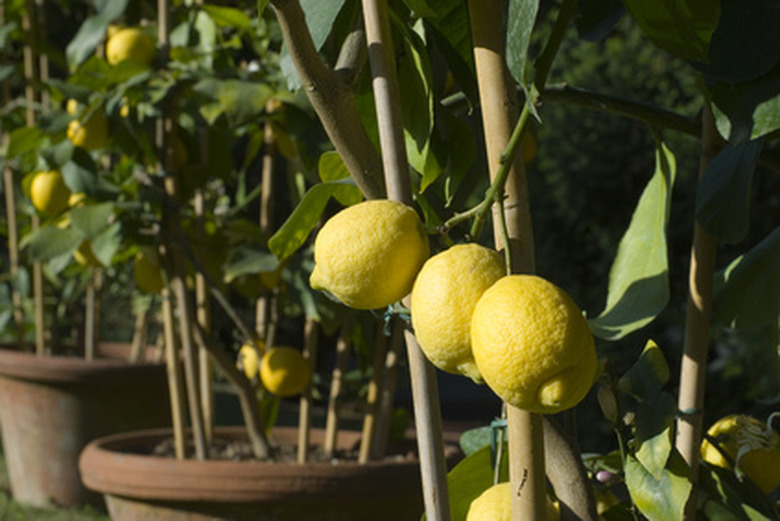How To Prune Dwarf Citrus Trees
Dwarf citrus trees benefit from annual pruning to shape the tree, help fruit ripen, promote maximum fullness and keep the tree healthy. Gardeners can prune indoor citrus trees at any time. Prune outdoor citrus trees in the summer to fall when the blossoms begin to develop fruit. Since the trees are small, pruning takes little time. Don't remove more than one-third of the wood in one season.
Step 1
Wait until your dwarf citrus tree begins to bear fruit so you can see where the fruit will set. If you prune before the tree begins to develop fruit you risk removing fruit-bearing wood.
- Dwarf citrus trees benefit from annual pruning to shape the tree, help fruit ripen, promote maximum fullness and keep the tree healthy.
- If you prune before the tree begins to develop fruit you risk removing fruit-bearing wood.
Step 2
Prune back the tips of branches that aren't growing fruit, cutting back to right before a leaf. This opens up the tree canopy to light and air, which helps citrus ripen.
Step 3
Trim back the tips of long branches using your pruners. Cut back to a lateral branch or to just before a leaf.
Step 4
Leave the fruit-bearing limbs alone unless the limbs are too weak to bear the weight of mature citrus. In that case, pick off the developing fruit to allow the limb to continue to grow. Weak limbs will break under the weight of citrus; this may cause more damage to the tree.
- Prune back the tips of branches that aren't growing fruit, cutting back to right before a leaf.
- Leave the fruit-bearing limbs alone unless the limbs are too weak to bear the weight of mature citrus.
Step 5
Check for dead, diseased or damaged branches on your dwarf citrus tree. Dead branches have few to no leaves and feel hollow. Diseased and damaged branches may be discolored or scarred. If left on the tree, they can spread disease.
Step 6
Clip off dead, diseased and damaged branches with your pruners. In between each cut, spray your pruners with disinfectant spray to avoid accidentally contaminating healthy parts of the tree.
Plant Food For Dwarf Citrus Trees
Citrus trees prefer well-draining growing conditions. Mulch helps to prevent soil erosion and water loss around your citrus tree, and also helps prevent weed growth that would compete with the citrus tree for soil nutrients and rob it of its nutritional support. Divide the total amount of fertilizer the tree needs in a year into three parts and apply one part in February, one part in April and one part in September. Because they are within the confines of a pot, indoor citrus trees need more frequent fertilization.
- Check for dead, diseased or damaged branches on your dwarf citrus tree.
- In between each cut, spray your pruners with disinfectant spray to avoid accidentally contaminating healthy parts of the tree.
Things Needed
- Anvil pruners
- Disinfectant spray
References
- Four Winds Growers: Pruning Dwarf Citrus
- Orchard's Edge: Pruning Citrus Trees
- University of Florida Extension: Dwarf Fruit Trees
- Arizona Cooperative Extension: Citruses in Lake Havasu
- North Dakota State University Extension: Growing Dwarf Citrus Trees Indoors
- University of Arizona Extension: Citrus Trees
- North Carolina State University Extension: Planting Trees and Shrubs
- University of Florida Extension: Your Florida Dooryard Citrus Guide – Young Tree Care
- University of California Extension: Planting and Care of Young Citrus Trees
- University of Arizona Extension: Fertilizing Citrus Chart
- University of Minnesota Extension: Growing Citrus Indoors
- University of Vermont Extension: Growing Citrus as Houseplants
